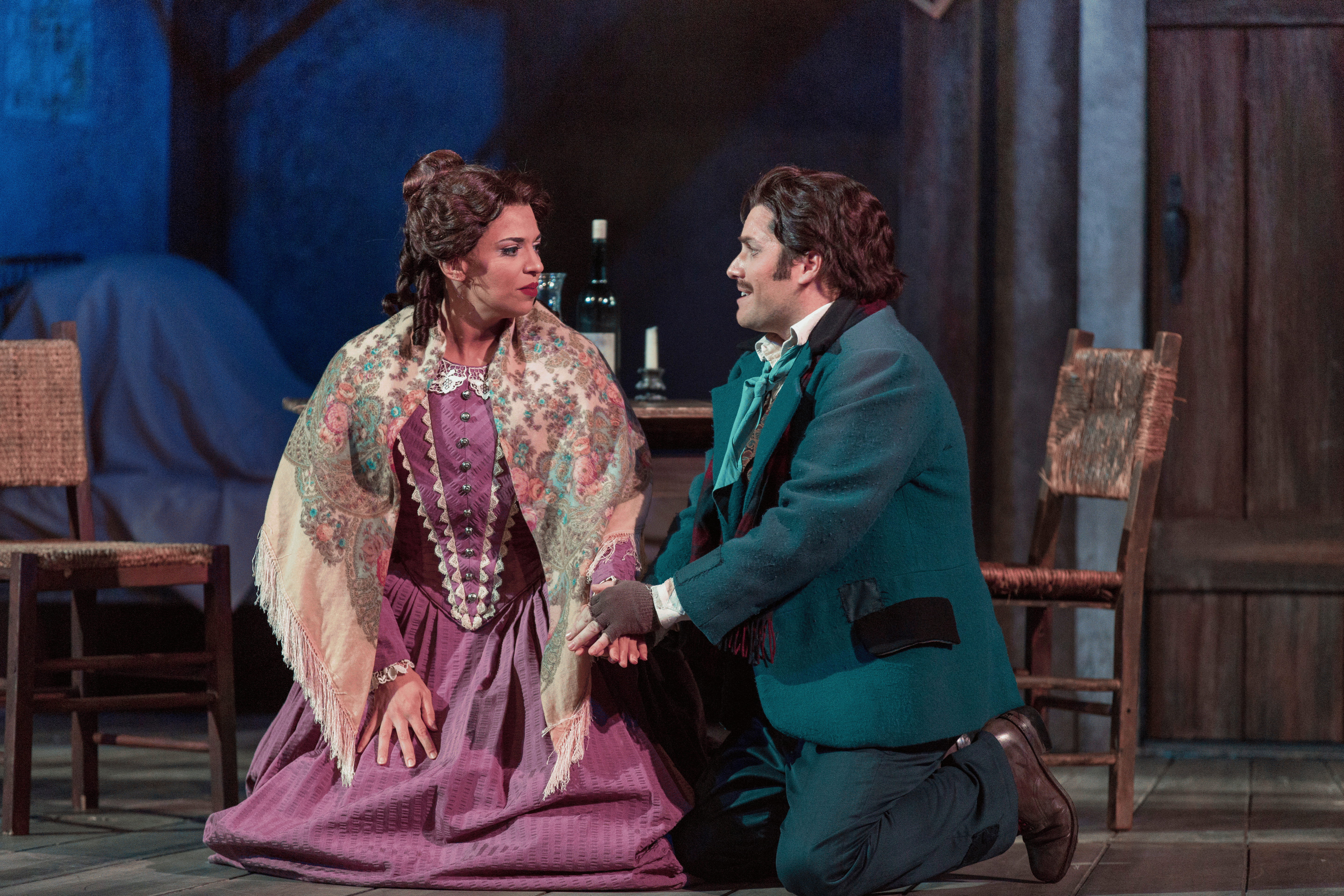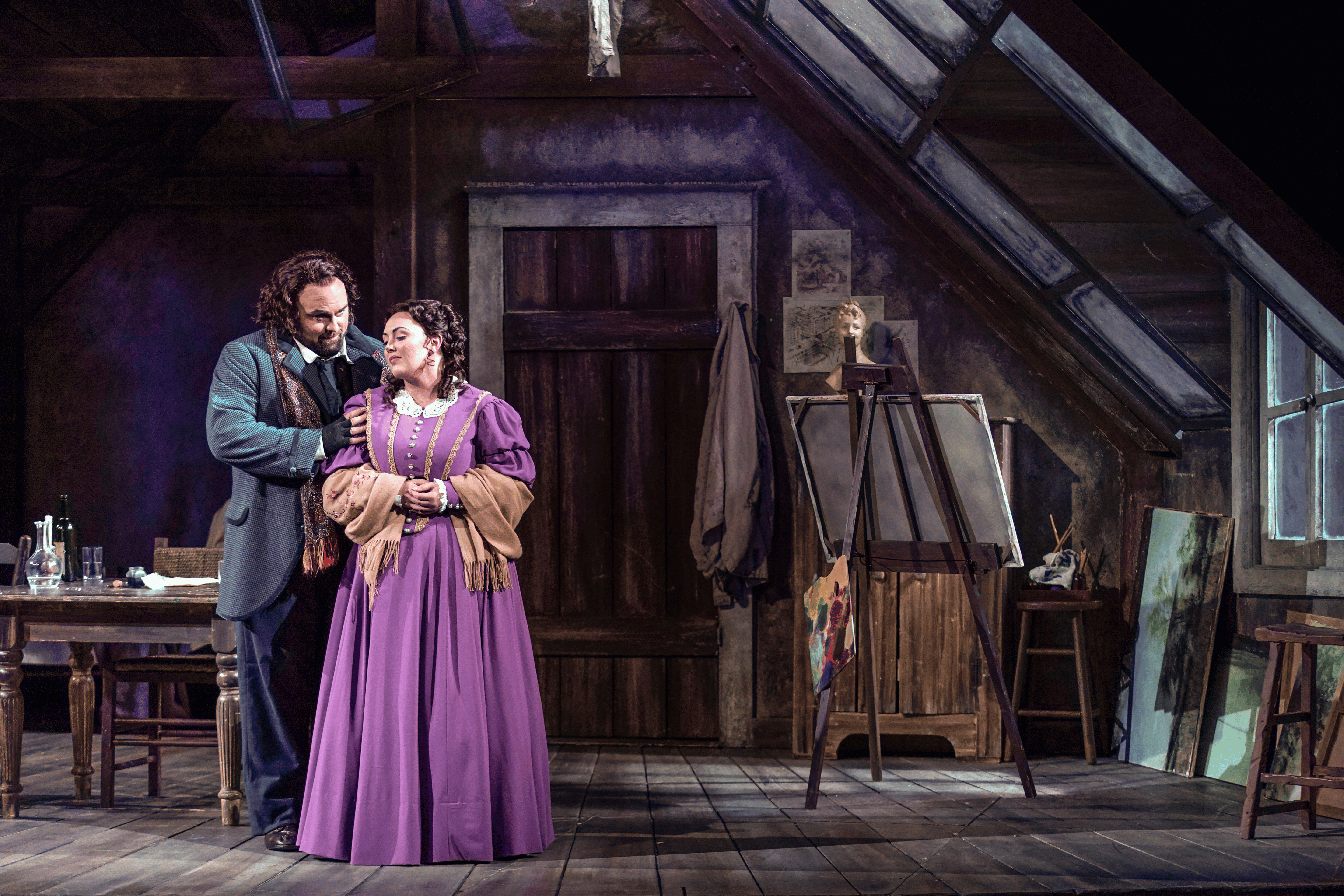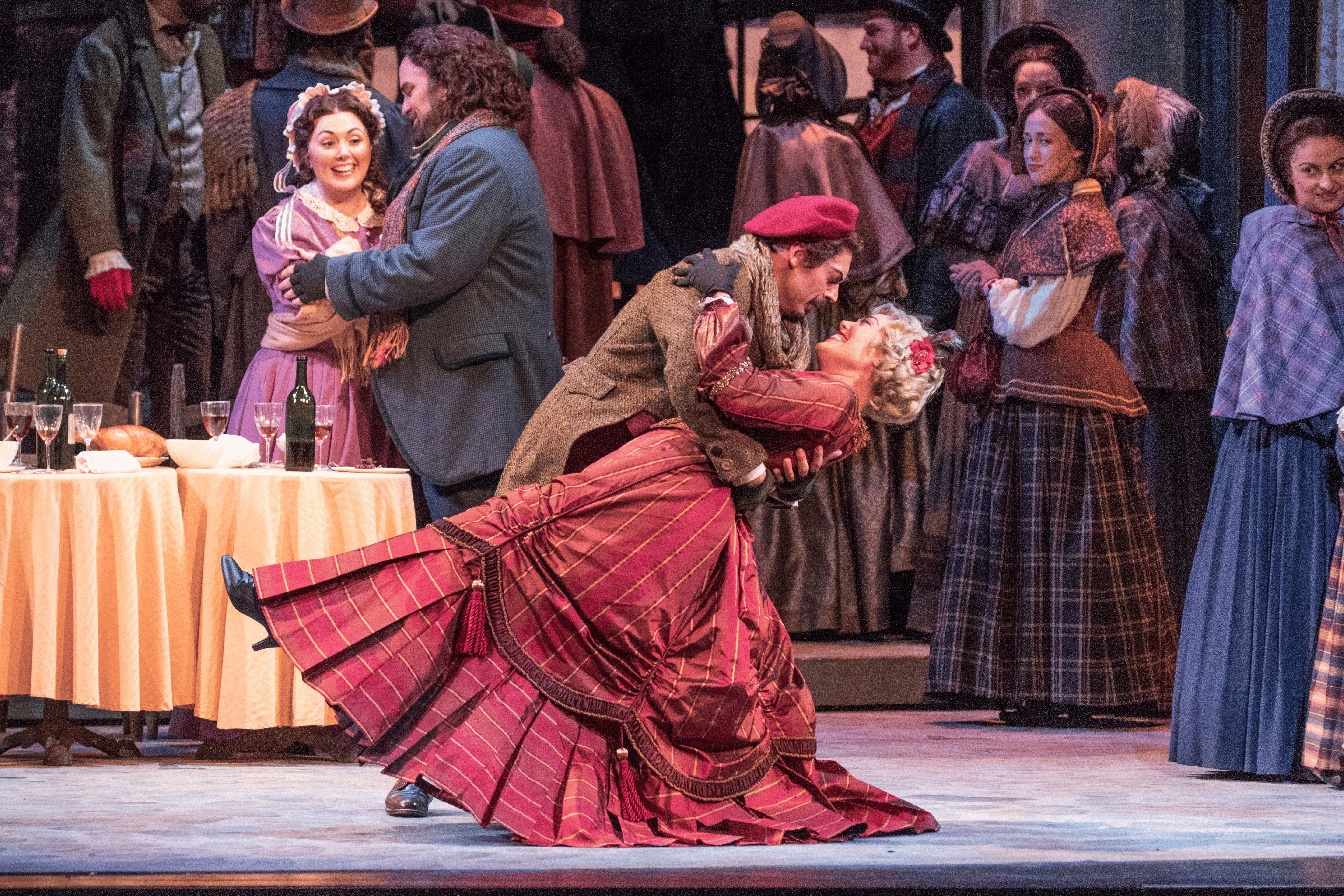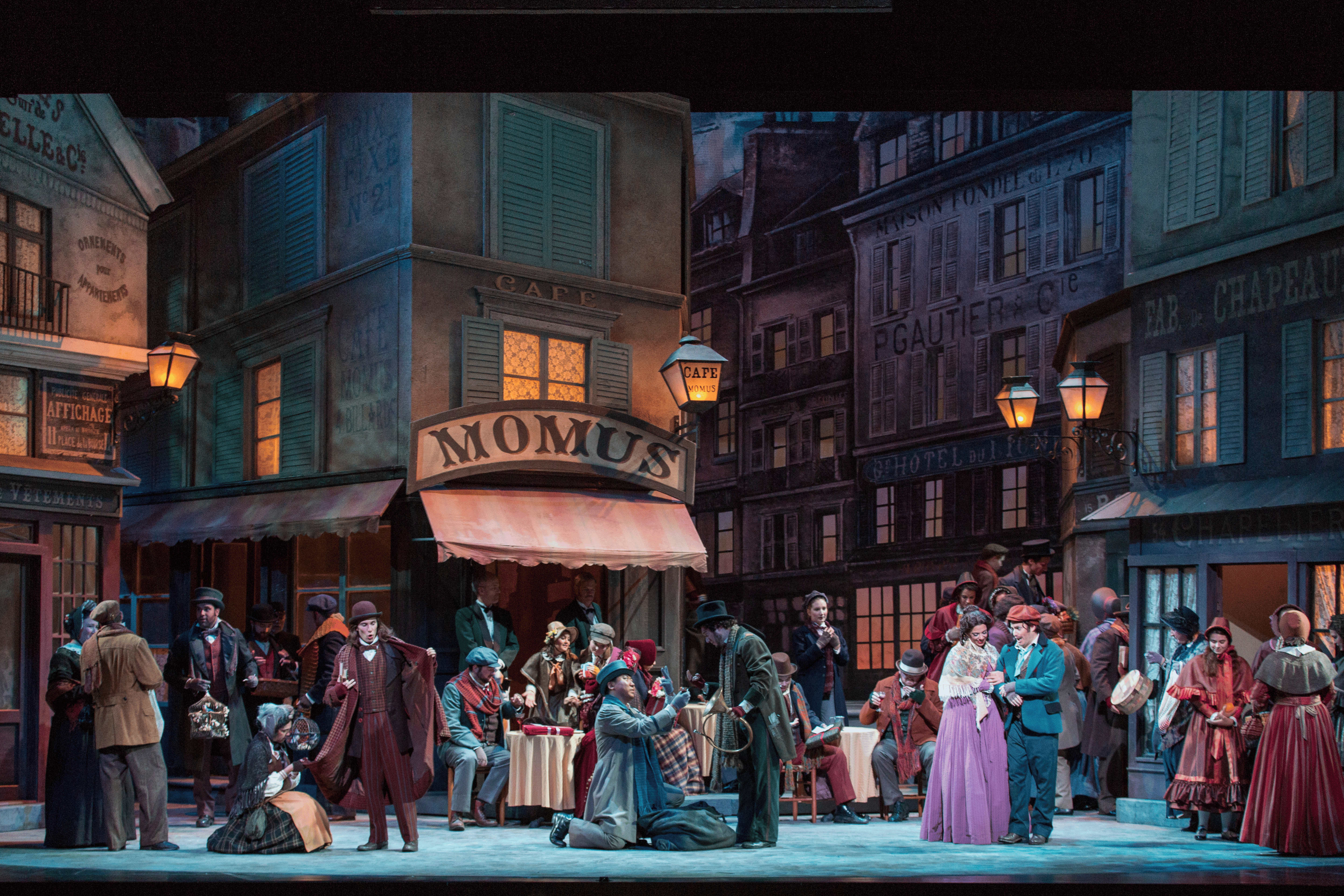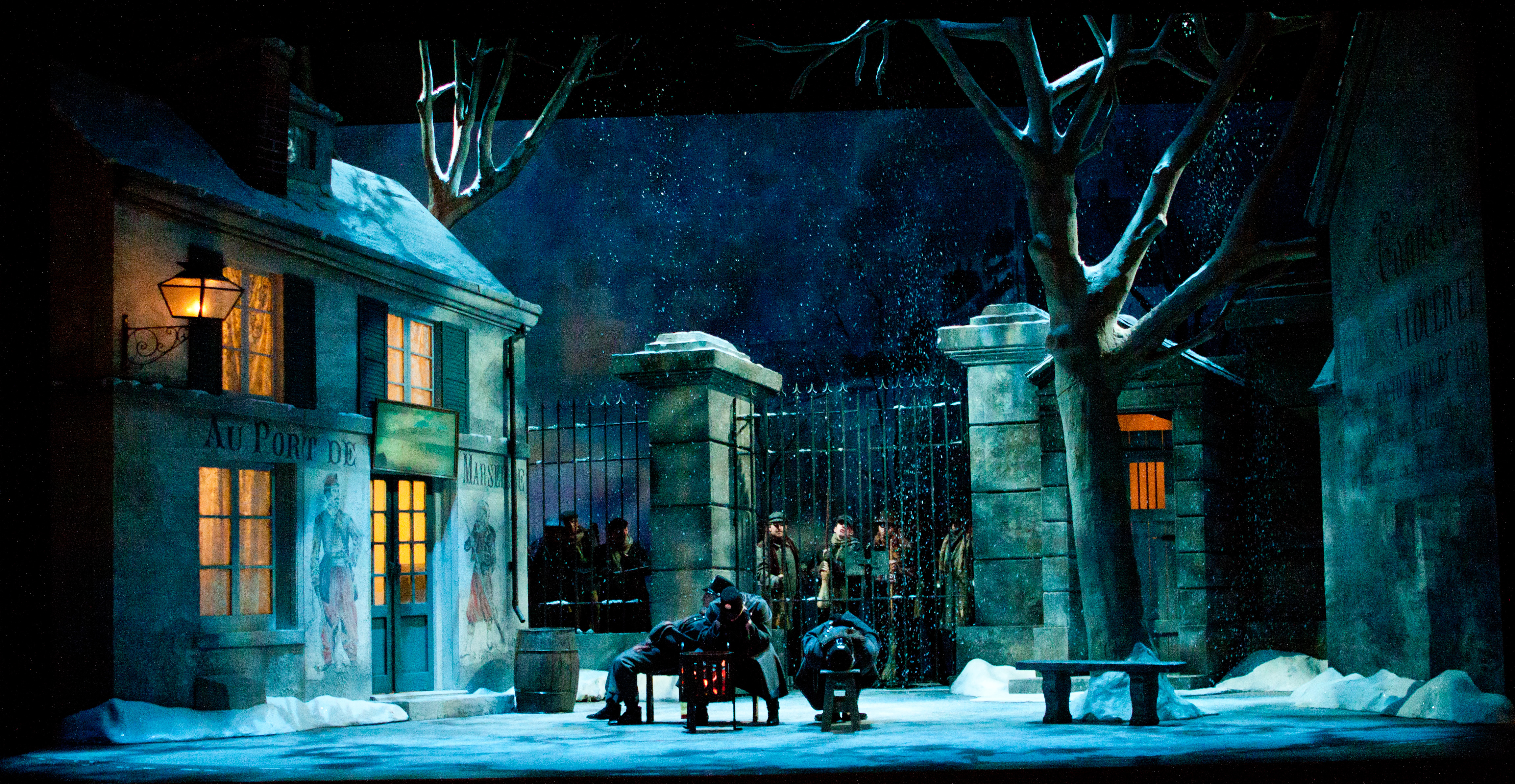
LA BOHÈME BACKGORUND NOTES
La bohème, the fourth opera written by the Italian composer Giacomo Puccini (1858 - 1924), is one of the most performed and best-loved operas in the world today. Its place as a masterpiece in the operatic canon is anchored by the work's many, almost contradictory, elements. These include realistic characters displaying simple emotions, theatrical situations, narrative brevity, and poetic expansiveness. However, the path to creating this fresh and original opera was a tortuous one for Puccini and his librettists. It was only after numerous changes of structure and detail that the work which audiences recognize as Puccini's La bohème came into existence.
Following the huge critical and popular success in early 1893 of his third opera, Manon Lescaut, Puccini divided his attention by working on two new operas simultaneously. They were La lupa (The She Wolf), based on Giovanni Verga's short story of a peasant life in Sicily, and La bohème. Puccini first gave preference to La lupa but finally decided to abandon its composition in July of 1894. The composer incorporated some of the music he had already been writing for his Sicilian opera into his Parisian one. Even with all of Puccini's attention focused on La bohème, its creation did not occur swiftly. The composer demanded many changes from the opera's two librettists: Luigi Illica, who was responsible for the scenario, and Giuseppe Giacosa, whose job was to versify the prose text Illica brought into the project. Because of Puccini's unhappiness with Illica's work, Illica complained to the publisher, Giulio Ricordi, that he had rewritten the complete libretto three times and certain sections four times in order to appease Puccini. Both librettists felt abused by the composer and each in turn wanted to resign from his assignment. Ricordi managed to keep Puccini, Illica, and Giacosa (whom he referred to as the 'Holy Trinity') working together.
The librettists' job adapting Henry Murger's book Scenes de la vie de bohème was not easy. French author Murger (1822–1861) wrote a work filled with many unrelated episodes and populated with numerous characters based on authentic Parisian figures. Illica and Giacosa had to create a coherent dramatic plot from the unconnected stories. Because of this challenge, the overall shape of the new libretto was much in flux. For example, the famous Act I meeting of Rodolfo and Mimì in the garret was not part of the opera's early stages. Ricordi himself, by suggesting that Musetta should reprise part of her waltz offstage, helped ease some of the problems in creating the current Act III. In the last act, Puccini was completely stymied in writing the music for four Bohemians in which they were to sing a toast to each other. Less than three months before the first performance, the composer simply deleted the section from the opera.
The world premiere of La bohème took place at Turin's Teatro Regio on February 1, 1896. It was at this same theater and on this date exactly three years before that Manon Lescaut had opened. La bohème on the whole was greeted in a friendly fashion by the audience but the majority of the critics were hostile. Expecting to hear an opera in the romantically tragic vein of Manon Lescaut, the critics instead were offered a mixture of lighthearted and sentimental scenes in often conversational style. They condemned the new opera as a step backward and especially castigated Puccini for some of his harmonic touches. In spite of the critics' objections, by the end of its first month La bohème was given 24 performances before sold-out houses.
After the first production of the opera, Puccini again demanded new alterations from his librettists. These included the addition of a section in Act II between Parpignol's exit and Musetta's entrance and changes in the end of the same act in order to conclude it more effectively. Puccini even made changes to the melody of Musetta's waltz. Further performances followed in Rome, but the reception at first was lukewarm. However, with a production in Palermo, Sicily in April 1897, the opera achieved an unparalleled success, and its fame spread throughout the Italian peninsula. Performances of La bohème are today the backbone of operatic seasons around the globe.
Sarasota Opera has presented many productions of Puccini's works at the Opera House. These include Madama Butterfly in 1986, 1994, 2007, 2011, 2017, and 2023; Il tabarro in 1987; Tosca in 1988, 2004, 2009, 2015, 2022; La fanciulla del West in 1993; La rondine in 1999 and 2008; Turandot in 2013 and 2019; and a production of the composer's complete Il trittico (consisting of the three one-act operas Il tabarro, Suor Angelica, and Gianni Schicchi) in 1996. Sarasota Opera last produced La bohème in 2020.
Greg Trupiano (1955–2020) joined Sarasota Opera in 1987 and was with the company until his death. He was also the Artistic Director of the Brooklyn-based The Walt Whitman Project, founded in 2000.
